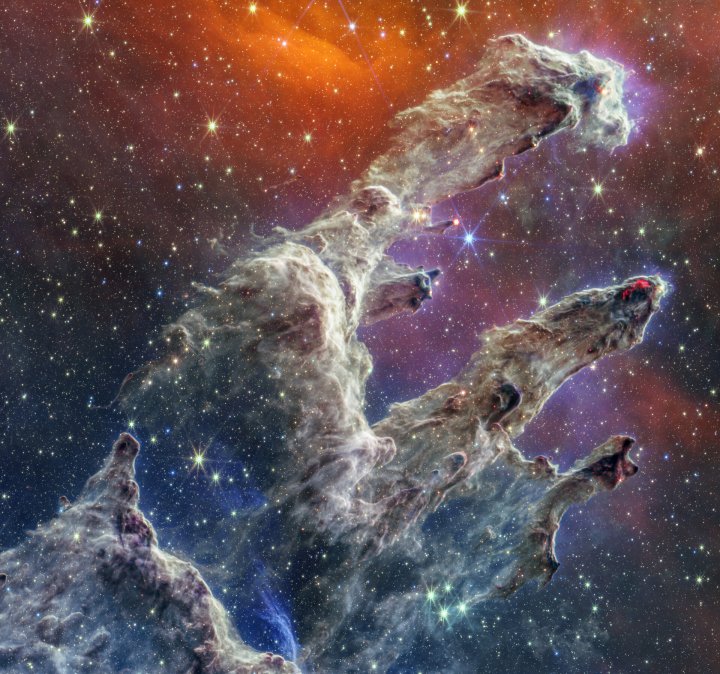The Hubble Space Telescope's image of the Pillars of Creation is one of the most well-known space images of all time. This stunning structure of dust and gas is located in the Eagle Nebula and is remarkable both for its beauty and for the process of star formation going on inside its clouds.
This natural wonder was captured by the James Webb Space Telescope in both the near- and mid-infrared wavelength. A new view of the famous structure has been created by combining the two images.

The image combines data from two different sources. There are many stars in the background and the newly forming stars which are visible as orange dots around the pillars of dust, as well as the layers of dust which are displayed in colors ranging from orange to indigodepending on their density.
This allows an image to show features that wouldn't otherwise be visible. In the image of the pillars, only a few stars are visible, while the near-IR can't penetrate the deep layers of dust.
New stars are created when dust forms into knots which gradually attract more material until they collapse under their own gravity. When more and more material is drawn into the core, it gets hotter and hotter, and eventually it becomes a main sequence star.
There is a recommended video.